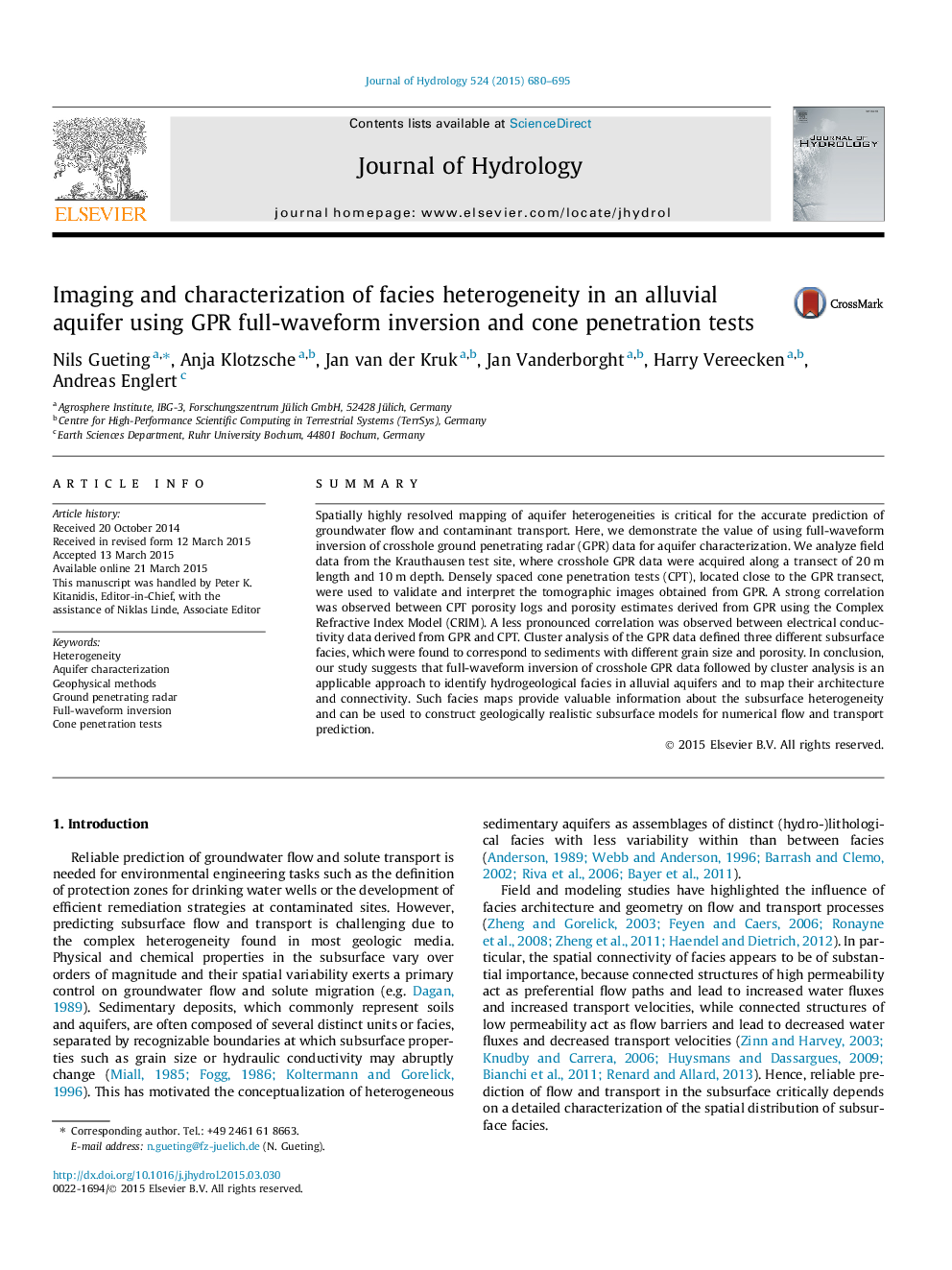| Article ID | Journal | Published Year | Pages | File Type |
|---|---|---|---|---|
| 6411492 | Journal of Hydrology | 2015 | 16 Pages |
â¢Crosshole GPR full-waveform inversion is able to map decimeter scale aquifer structures.â¢High-resolution full-waveform inversion results are confirmed by CPT data.â¢Hydro-lithological facies are obtained by cluster analysis of GPR and CPT data.
SummarySpatially highly resolved mapping of aquifer heterogeneities is critical for the accurate prediction of groundwater flow and contaminant transport. Here, we demonstrate the value of using full-waveform inversion of crosshole ground penetrating radar (GPR) data for aquifer characterization. We analyze field data from the Krauthausen test site, where crosshole GPR data were acquired along a transect of 20Â m length and 10Â m depth. Densely spaced cone penetration tests (CPT), located close to the GPR transect, were used to validate and interpret the tomographic images obtained from GPR. A strong correlation was observed between CPT porosity logs and porosity estimates derived from GPR using the Complex Refractive Index Model (CRIM). A less pronounced correlation was observed between electrical conductivity data derived from GPR and CPT. Cluster analysis of the GPR data defined three different subsurface facies, which were found to correspond to sediments with different grain size and porosity. In conclusion, our study suggests that full-waveform inversion of crosshole GPR data followed by cluster analysis is an applicable approach to identify hydrogeological facies in alluvial aquifers and to map their architecture and connectivity. Such facies maps provide valuable information about the subsurface heterogeneity and can be used to construct geologically realistic subsurface models for numerical flow and transport prediction.
